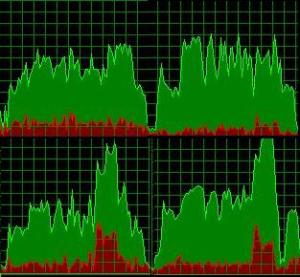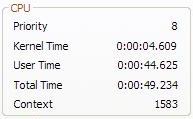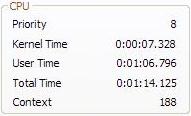MPEG-4 Part 2 is a video compression technology developed by MPEG. It belongs to the MPEG-4 ISO/IEC standard (ISO/IEC 14496-2). It is a discrete cosine transform compression standard, similar to previous standards such as MPEG-1 and MPEG-2. Several popular codecs including DivX, Xvid and Nero Digital are implementations of this standard.
If you were looking for MP4/Mpeg4 Part 10 CoreAVC vs FFmpeg video codec performance review then click here
Codecs:
Though there are several codecs that perform the encoding owing to the universal use of this encoding in dvds, common implementations are Nero, Divx, Xvid etc. Among these arguably the most popular codecs are Xvid and Divx. We will be seeing side by side comparison of both in the article. You can find both codecs individual history on their wiki pages. I find the history of Divx quite amusing,They adopted their name Divx to mock a company that used to charge users for viewing by the hour and themselves used spyware in their later version hence becoming a subject of mockery. You might have already noticed that “Xvid” is “Divx” backwards.
I will talk of decoding performance here. Decoding probably makes much more sense to a normal user as encoding is done by few but everybody decodes videos. Decoding is quite a subjective criteria hence besides my own comments I have also attached screenshots that allow the user to make his/her own judgment. The codecs were taken from Final build site.
Xvid

There is a very good chance that any video that you come across is encoded with Xvid. Across my search of encoders I found Xvid is the most preferred one for encoding. Its opensource hence free, much more configurable hence lets you draw the last byte’s worth. Though it seems logical that if video is encoded with encoder its respective decoder should also be the best, however I found the results didn’t fare as I expected.
Divx

The good old closed source version. Divx is costly and costing is on per PC basis hence encoding costly. Decoding can be done for free using their web player. The pro version is not free however there are other ways of using the codec in Media Player classic shipped with Klite Codec as explained below.
Here is the screenshot of Gspot codec analyzation. This provides the codec information with which the file was encoded in:
 Important things that can be highlighted from the Gspot codec is
Important things that can be highlighted from the Gspot codec is
1. Video Encoding was done by Divx version 5.1.1
2. Audio Encoding was done by MPEG-1 Layer 3 more popularly known as MP3
3. The default resolution is 352×272 and should be judged at that resolution
Further information can also be seen from the screenshot
PS: you can also use other codec information utils like AVI codec etc.
Following are the screenshots taken from the video with different filters(All the left screenshots are Divx and right ones are Xvid)

Click the pics and view them at full-size and compare them. As the videos clearly depicted the Divx Filter far outperforms Xvid Filter in visual apeal.
There is a very important decoder that I have not mentioned here, that is the FFmpeg decoder(default decoder in most open players like mplayer, media player classic and vlc). This decoder generally uses libavcodec to decode the media files and even though the performance is not as good as the above decoders but it is good enough but the difference in CPU usage is extreme. Ex for a normal movie where Divx and Xvid take as much as 25-30% CPU usage, FFmpeg will take barely 10-15%. So if its quality you are looking for then look no further than Divx but for performance nobody matches FFmpeg
So overall the results are quite ambigous. If you are looking for quality then Divx, for free encoding/decoding Xvid and for decoding performance FFmpeg . You can download the filters from here, and you can learn how to switch your filter from here. So what are you going to do with your player???

















Recent Comments